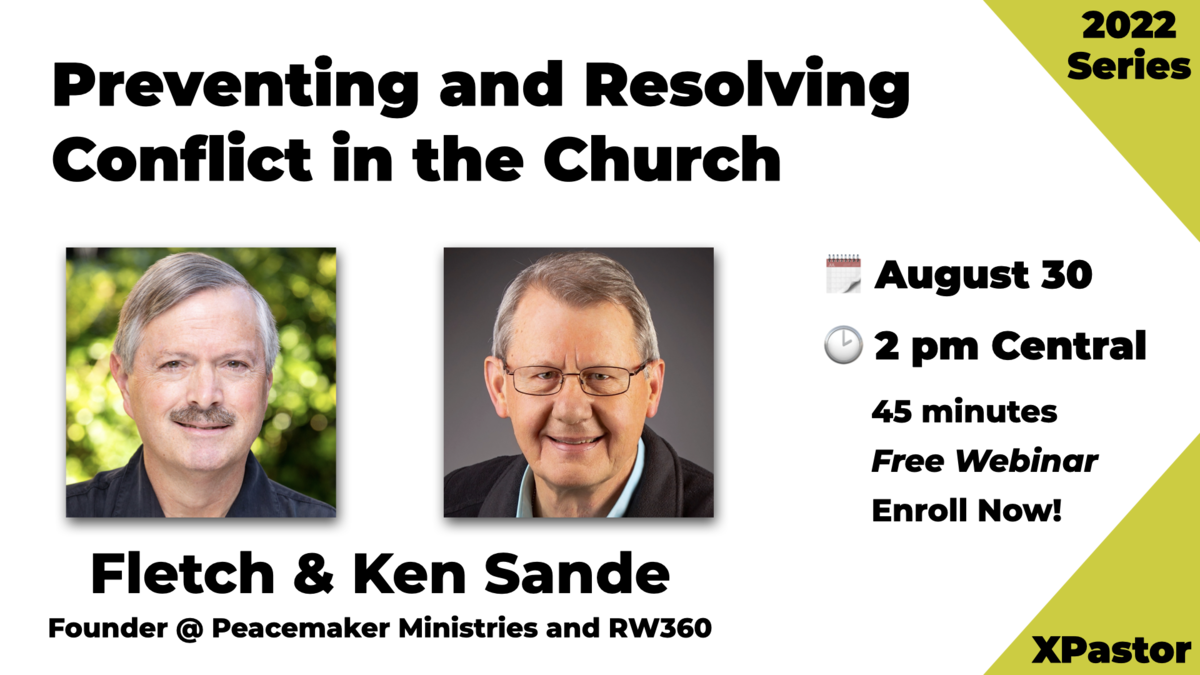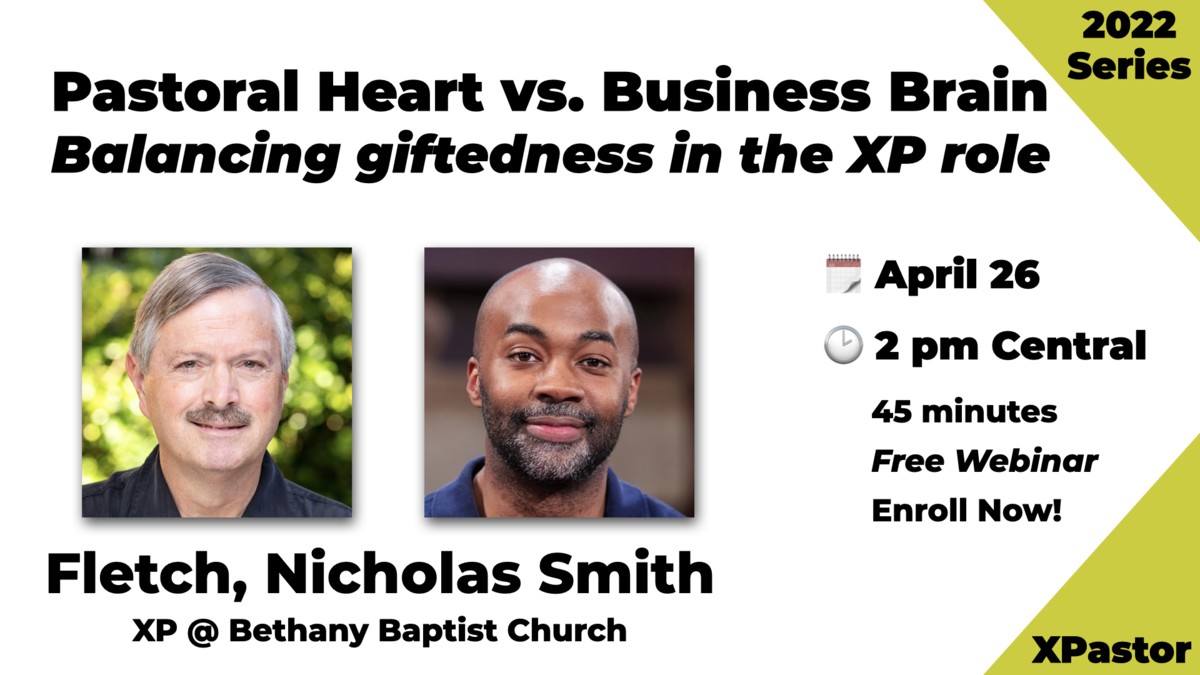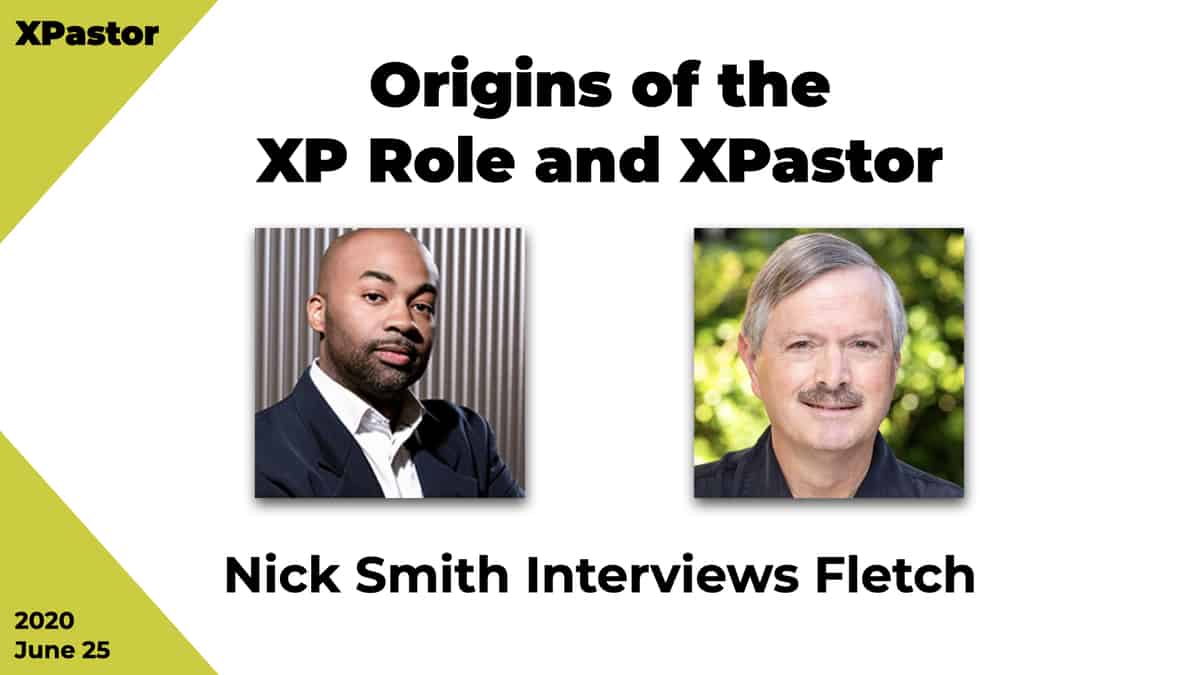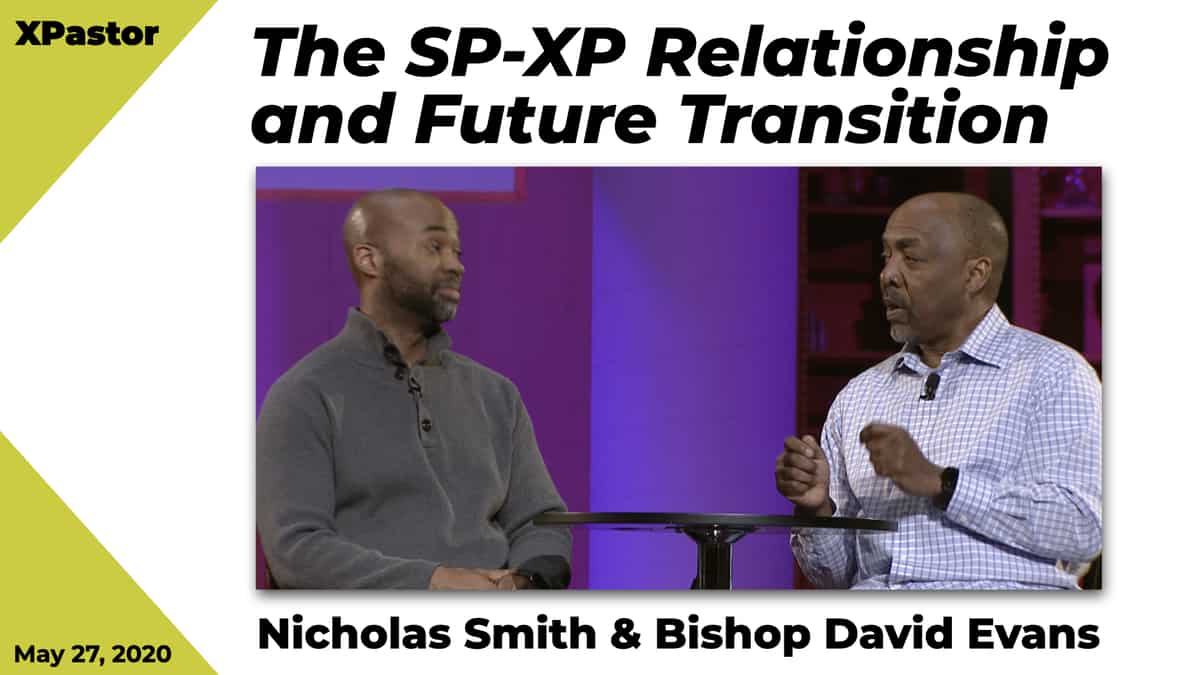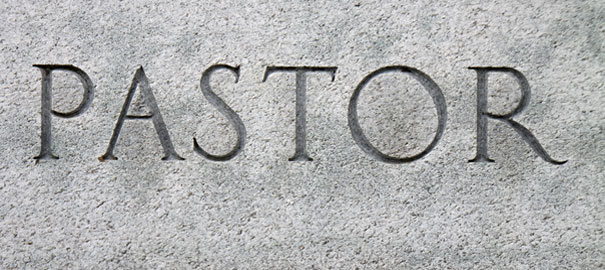When was the last time that the President of the United States attended the dedication of your Youth Education Center? When was the last time that the President quoted your Senior Pastor or called for advice? Dr. Anthony Evans is that Senior Pastor and Oak Cliff Bible Fellowship Church is that church.
On October 29, 2003, President George W. Bush gave extended remarks at the dedication of a new building at Oak Cliff Bible Fellowship in Dallas, Texas. The President commented:
You can hear Tony on 500 radio stations. You can read twenty of his books. You can listen to his powerful sermons on Sunday. He is a busy man, and one of the advantages of being President is he’ll take my phone call. And I’m glad he does, I appreciate his advice—and he’s got good, sound advice. I appreciate his friendship, he is a loyal friend. And I appreciate his prayers. The greatest gift American people can give a President and his family is prayer, and I want to thank you for that.
Oak Cliff Bible Fellowship is led by Dr. Evans as the Senior Pastor (in the picture with the President, Dr. Evans is on the right). Dr. Evans is served by his Assistant Pastor, Dr. Martin Hawkins. The church does not have an Executive Pastor. In the eventual retirement of Dr. Hawkins, the church has considered moving toward an Executive Pastor. Does Dr. Evans, a Senior Pastor leading an enormous ministry and admired by the President of the United States, need an Executive Pastor?
If Dr. Evans needs an Executive Pastor, and in light of Dr. Evans’ statement of possibly moving toward an Executive Pastor position, the cogent reason for doing so may be found in one of Dr. Evans’ stories. Perhaps Dr. Evans needs help with the foundation of the church, which is an essential role of Executive Pastors—strengthening the foundation of ministry. On February 10, 2003 and on other occasions, the President of the United States quoted a favorite story given to him by Dr. Evans. The President said:
We just reformed our welfare in America and we’ve helped a lot of people. Yet, even as we work to improve the welfare laws, we know that welfare policy will not solve the deepest problems of the spirit.
I first heard an interesting reminder of that fact from Tony Evans. He doesn’t remember, but I do. We were in Greenville, Texas. He tells a story about the guy who owns the house and there’s a crack running up the wall in the house. So he hires the best painter he can find, and the guy covers the crack and everything is fine. Until the crack reappears.
And so he hires another painter and he covers the crack. And Tony Evans reminded me and the audience; he said, “You don’t fix the crack on the wall until you first fix the foundation.”
Executive Pastors help Senior Pastors fix the foundation of the church. They work in the five functions of Administration, Catalyst, Mentor, Minister and Overseer. As Dr. Evans has considered moving towards an Executive Pastor, he may find the answer in his own metaphor.
Involvement in Ministry
Oak Cliff is a large church with over 6,000 in worship each week. Although it has a 4,000 seat sanctuary, the emphasis is on the person. Dr. Evans insists that each member be involved in ministry:
“Everybody who joins our church must take a ministry. You cannot become a member if you don’t agree to serve because then you want to say, ‘Preach to me, pray for me, sing to me, but expect nothing from me.’ That’s the existence of a leech,” says pastor Tony Evans.
Dr. Tony Evans and Oak Cliff Bible Fellowship are not content to just show up for church on Sunday while the neighborhoods around them fall apart. This Dallas, Texas, church serves its community with over 100 ministries.
A frequent message from Dr. Evans is involvement in ministry, not being a bench sitter. Involvement can be purely spiritual or it can be physical:
“If you’re going to benefit from the kingdom,” says Evans, “then you’ve got to be a giver to the kingdom. That’s what spiritual gifts are all about.”
Oak Cliff’s outreach program, Project Turn Around, meets the practical needs of the community. It also gives the church an opportunity to tell people about Jesus.
“This is what we’re about,” says Evans. “We’re about ministering to believers in churches in such a way that they’re being fed physical food, but also being fed spiritual food—food for the soul and food for the body—so that people see that what we say with our mouth we live with our feet. That’s what this outreach is all about.”
Through Project Turn Around, Oak Cliff gives away hundreds of Christmas gifts and provides free medical tests. The church also puts on street festivals and sporting events. And hundreds of kids come to the church’s back-to-school outreaches for fun, music, and an exciting gospel presentation.
Project Turn Around is only one example of scores of ministry that the church has spawned.
The Genesis of the Church
Dr. Evans had strong ideas about the church and how it could influence the society around it. These are seen in the manner in which he began Oak Cliff:
At 27, Tony Evans’s path appeared planned. After eight years of Bible college and Dallas Theological Seminary, he’d earned his master’s degree with honors. And the seminary offered him a full-time teaching position.
Everything looked excellent. Tony could teach biblical truth, enjoy a secure family income, and conveniently pursue a doctoral degree.
“But then pastor Gene Getz reminded me of all these theoretical ideas I had,” recalls Tony. “He challenged me to put them into practice. And faculty member Charles Ryrie told me that the world didn’t need another ideologist …
The two urged Tony to turn down the teaching position and plant a church in Oak Cliff, a Dallas suburb. This option carried limited pay, fewer immediate opportunities, and no prestige. Tony accepted the challenge.
“It’s funny,” Evans muses, “but after I turned down the position and accepted the church-plant, the seminary called back and offered me a part-time teaching position. So by choosing what God directed, I got both.”
One can already see that Dr. Evans was a busy man—church planter, part-time seminary professor, preacher, leader of a church of hundreds of ministries.
A History by Oak Cliff
The church has a detailed history on its website. It would do well to let the church speak for itself regarding its history.
For twenty years, Oak Cliff Bible Fellowship has endeavored to exemplify God’s alternative lifestyle before the world. We actively demonstrate His teaching in our respective areas of influence, living out our church motto, “Discipling the Church to Impact the World.” This “alternative” vision began in the heart of OCBF’s pastor, Dr. Anthony Evans long before he had any inkling he would be pastoring a church. In fact, he had been in preparation to take the biblical alternative of problem-solving to people all over the world as an evangelist. However, in early 1976, God in His infinite wisdom dramatically altered Pastor Evans’ plans.
Dr. Reuben Connor of Urban Evangelical Mission (a ministry dedicated to planting Bible churches and formerly known as Black Evangelistic Enterprise) and Dr. Gene Getz of Fellowship Bible Church North were concerned about the need for another strong Bible church in the Oak Cliff area of Dallas. They believed such a church could impact the community, especially the black community, with sound Bible teaching and the alternative Christian experience. They presented this challenge to Pastor Evans. Because of his desire to serve God as an evangelist and his belief that this was God’s plan for his life, Pastor struggled and prayed for many days before finally reaching a decision. He contacted his friend, Rev. Crawford Loritts of Norristown, Pennsylvania, and asked him to join in starting this church.
Seeking God’s guidance step-by-step, they chartered the church as Oak Cliff Bible Fellowship on June 1, 1976, with ten members. Rev. Evans and Rev. Loritts served as co-pastors and elders. Worship services began in the home of Pastor Evans, alternating from house to house. Both pastors preached each Sunday, with a time of fellowship during a break between the two sermons. The congregation began to experience authentic Christian fellowship as they grew to love each other and minister to one another. Through the grace of God, the church began to grow, and the leaders found it necessary to locate a larger facility that would accommodate the worship of the entire church family. One month after its inception, the church moved to the Cabana Room of the Briargate Apartments clubhouse. Shortly after this move, the church started developing programs to meet the needs of the various members of the church family. The Learning Center, which provides biblical teaching specifically for children, was begun on the steps of the Cabana Room with Elizabeth Cannings as the first teacher.
The sermons preached by the pastors pointed many to Christ, resulting in further growth. The church had its first baptism in the swimming pool at the apartments of its first convert, Van Howard. As the church grew from ten members to 25 families, inadequate space for effective ministry became a problem. The leaders were again led to find a larger place for worship. Early in 1977, they moved to the Advent Lutheran Church at 6607 South Hampton and increased the programs. The first Vacation Bible School was held under the direction of Martin Hawkins and Elizabeth Cannings. Lois Evans organized and directed the adult choir, with most of the members participating. A year and a half after the church began, the Lord moved Pastor Loritts to minister with Campus Crusade for Christ.
The church had grown to 100 families by 1978 as Pastor Evans faithfully preached the message of salvation and the congregation tirelessly sought the mind and will of God. Once again, the worship facilities were much too small. The church then moved to Adelle Turner Elementary School at 5505 South Polk. The Lord doubled the membership and Van Howard was added as elder to help direct the congregation. It was during this period that the care group ministry was organized under the direction of Martin Hawkins, assisted by the other elders. The women organized the group now known as the Ladies’ Fellowship under the leadership of Shirley Hawkins and Lois Evans.
As it became more and more difficult to continue holding services at the elementary school due to pressure from the DISD school board, the leaders were forced to consider finding a permanent place for worship and ministry. In the fall of 1979, Pastor Evans called the men together at his home to pray that the church would somehow be able to purchase the Camp Wisdom property of Faith Bible Church, which was available for $200,000. Shortly thereafter, God divinely intervened by placing in the heart of one man the desire to see that the building was purchased. On a day when Pastor Evans was particularly frustrated by the apparent hopelessness of the situation, he was in a friend’s office relating the desire of OCBF to buy this building. As he recounted the story of how their loan application had been denied by bank after bank, Bob Hickman (who was in an adjoining office) overheard the conversation. He requested to be introduced to Pastor Evans. To Pastor’s surprise, Mr. Hickman committed on the spot to provide the needed funds. He personally wrote a check to OCBF for the entire amount. In December 1979, just fours years after Pastor Evans was first approached about becoming a full-time pastor, the flourishing church family had a permanent home.
The following year proved to be one of milestones for the vibrant congregation. Not only were the members getting settled into their new surroundings, but they were growing rapidly. Pastor Evans realized he needed help in overseeing the spiritual development of the group, as well as secretarial help in organizing the church office. Martin Hawkins was hired as Assistant Pastor, the first five deacons were installed, and Mary Ann Tennison became the first church secretary. In addition, another level of ministry was added. Under the direction of Van Howard, the Child Development Center as established in June to provide total child care for children from 18 months through pre-kindergarten. The establishment of the CDC represented one of the church’s first efforts which would reach the community. Beginning in 1980 and continuing in the years immediately following, OCBF experienced an expanded outreach emphasis. By the end of the year, the church had grown to 200 families. New ministries were developed as God increasingly attracted people to the church through the proclamation and application of our alternative vision. In 1981, the tape ministry was established. The singles ministry and the Wednesday Night Bible Institute (now called Center for Christian Growth) were organized under the direction of Martin Hawkins.
The membership reached 250 families in 1982, and the need for still more staff became apparent. Carl Husband was hired as Associate Pastor of Outreach and Johanna Fisher as Pastor Evans’ administrative assistant. Evangelism, which had always been important to the growth of the church, assumed a higher priority. The church held its first week-long evangelistic outreach, resulting in thirty-five people accepting Christ as Lord and Savior. Another worship service was added in order to accommodate the tremendous growth. During this period, the church began to support missionaries on a regular monthly basis. Some of the agencies chosen for support were Urban Evangelical Mission, Wycliffe Bible Translators, Unevangelized Field Missions and Campus Crusade. Pastor Evans earned his doctoral degree from Dallas Theological Seminary that year, becoming the first African-American to do so. Also in 1982, Dr. Evans organized The Urban Alternative to unite, equip and empower the church to impact individuals, families and communities for the rebuilding of their cities from the inside out, extending the impact of the ministry and philosophy of OCBF across the United States and abroad.
In 1983, the congregation began an era of reorganization as they again sought sufficient space to house the ministry. The church was restructured into four areas—Worship, Fellowship, Christian Education, and Outreach. Larry Mercer joined the pastoral staff part-time and later became the full-time Associate Pastor of Christian Education. From this year through 1985, membership increased from 350 to 450 families, then to 600 families. The care groups expanded until their size was jeopardizing their effectiveness. A decision was made to revise the care groups and divide them into smaller care cells, which were to be overseen by the deacons.
In 1984 and 1985, new endeavors were set in motion to meet the growing needs of the congregation—single parents, social services, financial counseling, youth evangelism. The Alternative Community Development Services was added as a ministry of OCBF to further adult education and involvement with the community. OCBF held its first Missions Emphasis month and Financial Seminar. The emphasis of VBS was expanded to include the entire family and has since been known as Family Vacation Bible School. Space continued to be a problem and enthusiasm began to intensify for a “building to house God’s programs.” This launched the “Give Us This Mountain” stewardship campaign.
By June 1985, the two Sunday services were overflowing, and there was an immediate need for more space. Prior to building a worship center, the leaders and members decided to rent the auditorium of David W. Carter High School. For the first time since January 1984, the entire congregation worshipped together. In addition, ground breaking services were held on the site where the worship center would be built, and construction began in November. A 24-hour prayer chain was held in December to pray for the building of God’s ministry at OCBF. A special service was held to recommit the members to the building campaign. Weekly communion services were begun at this time. On May 8, 1985, after a long illness with cancer, Pastor Carl Husband was called home to be with the Lord.
The membership total was 700 families by 1986, and attendance at Sunday morning worship services often reached 1,500. The leaders recognized the necessity of being good stewards of the assets and resources God had given, so they hired Solestine Molett as OCBF’s first business manager in 1986. Warren Mattox joined the pastoral staff as Associate Pastor of Outreach after serving since July 1985 as Interim Outreach Pastor following the death of Carl Husband. The Care Cell Ministry was revised and the cells were divided by zip code. In June, construction on the new sanctuary ceased, although the stewardship campaign continued. As part of the alternative vision to provide a biblical foundation for all aspects of life, a Christian school (now called Fellowship Christian Academy) was established for kindergarten, with first grade the next year and plans to expand as needs dictated.
In January 1987, OCBF was unable to renew the lease on Carter High School because of a policy change by DISD. In order to accommodate the explosive growth to more than 1,200 families, the worship format was expanded to four services—Saturday at 7:00 p.m. and Sunday at 7:30 a.m., 9:45 a.m., and 12:00 noon—at 1808 West Camp Wisdom Road. Ophelia Greene was hired as Business Administrator to replace Solestine Molett, who married and relocated to North Carolina. Clarence Diggs was hired as Minister of Music. Even though construction on a permanent worship center had halted, our need for more space was ever present. After determining the level of support from the congregation, the leaders decided it would be better to build an interim, all-purpose facility at that time.
On October 17, 1988, a season of sacrifice and prayer was culminated by the triumphant entrance into the new Family Life Center. The FLC allowed OCBF to minister to approximately 1,700 people at one time, and it is used extensively during the week by many ministry groups. With the opening of the FLC, the Resource Center and Bookstore were established to provide Christian materials for continued spiritual development. In 1989, an additional 22 acres of land on the north side of Camp Wisdom Road was acquired for future expansion. To reach the community with the alternative message and to generate interest and raise funds for Fellowship Christian Academy and the Child Development Center, the first Annual Community Fair Day was held on the first Saturday in July. As part of the commitment to be more directly involved in missions outreach, OCBF youth made their first mission trip to Guatemala, and the Fellowship Singers went to India with “RReach International.”
In 1990, to further accommodate the space needs of the Learning Center and the Child Development Center, Education Center II was added adjoining the Youth Chapel. The ministry to children was expanded and enhanced to include His Hands Puppeteers and AWANA. OCBF also developed a senior citizens outreach both inside and outside the church.
Over the next two years an additional 12 1/2 acres of land was purchased for future expansion, a monthly prison outreach to Lew Sterrett Justice Center was begun and approximately 640 new members were added to the church. In addition, a new visitor brochure was completed, and all operations were computerized. Pre-membership classes were restructured, and small group spiritual growth classes were begun to address the needs of new members. Youth baptism classes officially started and were held three times during 1992. The Village Oaks Apartment complex ministry started and included weekly Bible studies for adults, youth and children, as well as a special Christmas outreach to over 21 families. The medical ministry expanded its preventive medical program with regular seminars on maintaining good health and began regular blood pressure screenings.
The Reach and Rescue program was started to minister to members not regularly attending worship services. At this time, the church began streamlining its activities into departments under the six major ministry areas—Discipleship, Fellowship, Christian Education, Worship, Outreach and Administration.
In 1994, construction of the new Worship Center was officially started in order to meet the demands of a growing church family. The church leadership placed heavy emphasis on moving a large percentage of the congregation through the core curriculum of the Center for Christian Growth, which led to the largest registration ever. Century Builders was contracted to begin construction of the new 99,000 square foot, $7.5 million Worship Center.
A variety of major expansions took place in 1995. Fellowship Christian Academy expanded to the sixth grade, and implementation of the new leadership track and ministry-based discipleship program was begun. Rev. London was added as our new full-time Associate Pastor of Worship, Rev. LaFayette E. Holland was added as Associate Pastor of Outreach, and Mr. Gregory Smith became the new church Business Administrator. The comprehensive church-based impact program known as Project Turnaround was successfully organized under ACDS and is promoted through the church to address the social, economic, educational and family needs of the broader community. Our gender-based discipleship program (M’PACT—Mentoring People According to Christ’s Teaching), which was designed to help mature the believer by meeting spiritual and emotional needs, saw tremendous growth through the Men’s and Ladies’ Fellowship. The church-wide evangelistic outreaches were accomplished through the Village Oaks program and the Jesus Video Project that witnessed to approximately 550 individuals.
After much prayer and fasting, the church culminated the long-awaited opening of the OCBF Worship Center by marching into the sanctuary on Sunday, October 1, 1995 to the sound of the trumpet blast. The new Worship Center houses the offices of the Senior Pastor, the Assistant Pastor, the Worship Pastor and the Business Manager and their staffs. It enables the church to minister to more than 4,000 people at one time. In conjunction with the opening of the new Worship Center, there was a major expansion in the Wednesday evening prayer service. The Center for Christian Growth and AWANA, the bookstore, the resource center and other ministry areas have increased their ability to minister to the needs of people.
The Assistant Pastor, Martin Hawkins
As seen in the History of Oak Cliff, Dr. Evans has assembled a faithful staff to carry the work forward under his direction. As churches grow, many add a second pastor; that person often received the title Associate or Assistant Pastor. Dr. Martin Hawkins was hired as the Assistant Pastor, a position which he carries to this day. For his doctoral dissertation, Dr. Hawkins has helped define the role of the Assistant Pastor.
The Assistant Pastor’s position is a supportive leadership position. The individual in this position has the primary responsibility to assist the Senior Pastor in creation, implementation, and management of specific functions designed to bring about the unity and maturity of the body of Christ. This will involve working closely with the ruling board as well as the congregation.
Hawkins key term for the Assistant’s role is specific functions. While the Senior Pastor has responsibility for all ministries in the church, the Assistant oversees only a limited number of ministry areas. As to the duties of the Assistant, Hawkins notes:
Often, this position’s duties will entail general responsibilities delegated by the Senior Pastor or ruling board, or both. In other instances, this position is responsible for specific areas of ministry such as Education, Outreach, Youth or Worship. Sometimes the Assistant Pastor will function as an Executive Pastor who oversees all internal administration.
Hawkins points the way from the Assistant Pastor to a beginning definition of the Executive Pastor, pointing to something beyond the limited scope of the Assistant Pastor.
There are problems related to the Assistant Pastor position. The role of the Assistant Pastor is often overlooked, as Hawkins says “… the Congregation is highly unaware of the intricate working of the Assistant and Associate Pastors.” Further, he notes that “… many Associate Pastors struggle in their positions to find fulfillment and significance in their roles.” In 1997, Greg Ogden pointed out that there is transience in the role: “On the average, Associate Pastors change positions every three to four years. This turnover indicates an underlying dissatisfaction in the role of Associate. Two primary reasons for this are: (1) in the church culture, it is assumed that Associates worth their salt will move toward a senior position, and (2) within some church staffs, there is considerable dissension between Associate and Senior Pastors.”
For a period of time the Assistant helped the Senior Pastor. It seems that as the church grew that the Assistant role did not have the required scope to enable the Senior Pastor to focus on preaching. Schaller comments that, “The larger the congregation and the longer it has been in existence, the more complex the requirements of the staff. … This factor is one reason why many large churches are replacing the full-time Associate Minister …”
Many churches continue to use the position of Associate or Assistant Pastor. This may be due to the history of the church, polity, or the need to make changes on a timely basis. Assistant Pastor Hawkins and Senior Pastor Dr. Anthony Evans have said that Oak Cliff Bible Fellowship of Dallas, Texas, will move toward the Executive Pastor role in the foreseeable future. An organizational chart of a church with an Associate Pastor can be constructed. There are many variations of church structure with an Associate Pastor and the chart presents one example (See PDF at bottom of page)
The organizational chart illustrated the difficulty of the Assistant or Associate Pastor roles. The Senior Pastor has at least six people in a reporting relationship. There will be others who will need to meet with the Senior Pastor on a regular basis, such as the person who oversees the worship services. The Senior Pastor has personnel to handle the tasks of ministry but oversight is still with the Senior Pastor. This scenario puts a tremendous management burden on the Senior Pastor, without even addressing preaching responsibilities.
Ken Godevenos recommends that, “Decide whether an Administrative Pastor or a true XP is required. The former administers day-to-day operations while the latter usually acts as the pilot who gets us to our destination.” Schaller weighs in on the role of the Business Administrator:
The larger the congregation, the greater the institutional pressure on the Senior Minister to place a higher priority on administration rather than on spending time with members in a pastoral role. …
A widespread response to this pattern of institutional behavior is to employ a church business administrator in an effort to free the Senior Minister to spend more time on preaching, pastoral care, and other ministerial duties. Occasionally this response turns out to be a good solution to the problem.
In spite of Schaller’s dire warning, churches such as Oak Cliff Bible Fellowship, have successfully used the Assistant Pastor and Business Administrator model for many years. Wes Kiel adds to this subject from his research on Executive Pastors:
I believe that the gifts that make a person a good Business Manager are quite different than, even opposite from the gifts which make a good Executive Pastor. The Business Manager needs to be the kind of person who naturally keeps close control of everything under his/her jurisdiction while the ministry manager should encourage people to ‘go for it.’ Good Business Managers have an eye for detail while good Executive Pastors need to be able to see the ‘big picture.’ One Executive Pastor who had successfully moved from the position of church Business Manager said that he had to learn to shift from ‘tight control to light control.’
There is not necessarily an adversarial relationship between a Business Administrator and an Executive Pastor. Rather, the two positions vary by scope, gifting and function.
Conclusion
The issue for Oak Cliff Bible Fellowship is “To XP or not XP, that is the question.” Should the church stay on the same path with a Business Administrator and Assistant Pastor, or adopt the position of the Executive Pastor?
As noted in the introduction, President Bush said: “Tony Evans reminded me and the audience, he said, you don’t fix the crack on the wall until you first fix the foundation.” With such a large and multifaceted ministry as Oak Cliff, there may be some cracks in the wall—a large church always has some issues. One wonders if there are cracks in the foundation that an Executive Pastor can help fix. Perhaps in his consideration of the position of Executive Pastor, Dr. Evans is weighing the merit of his own illustration.
View the footnotes and graphics in the original PDF: Oak Cliff Bible


